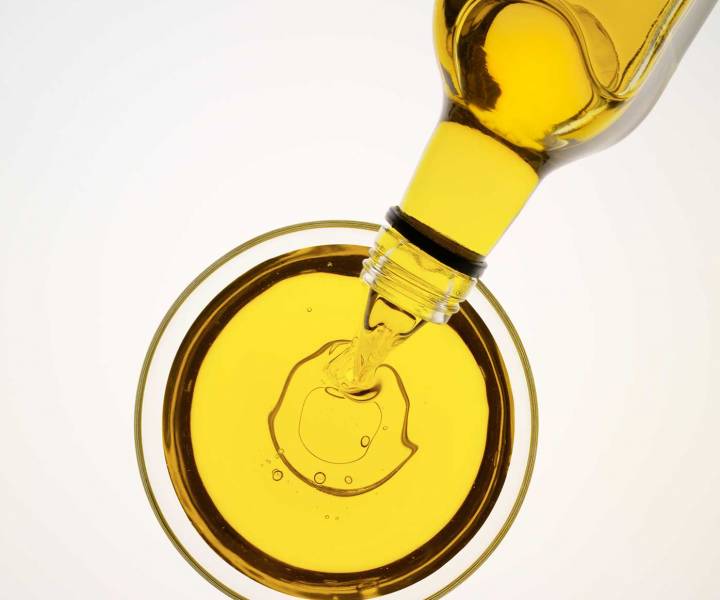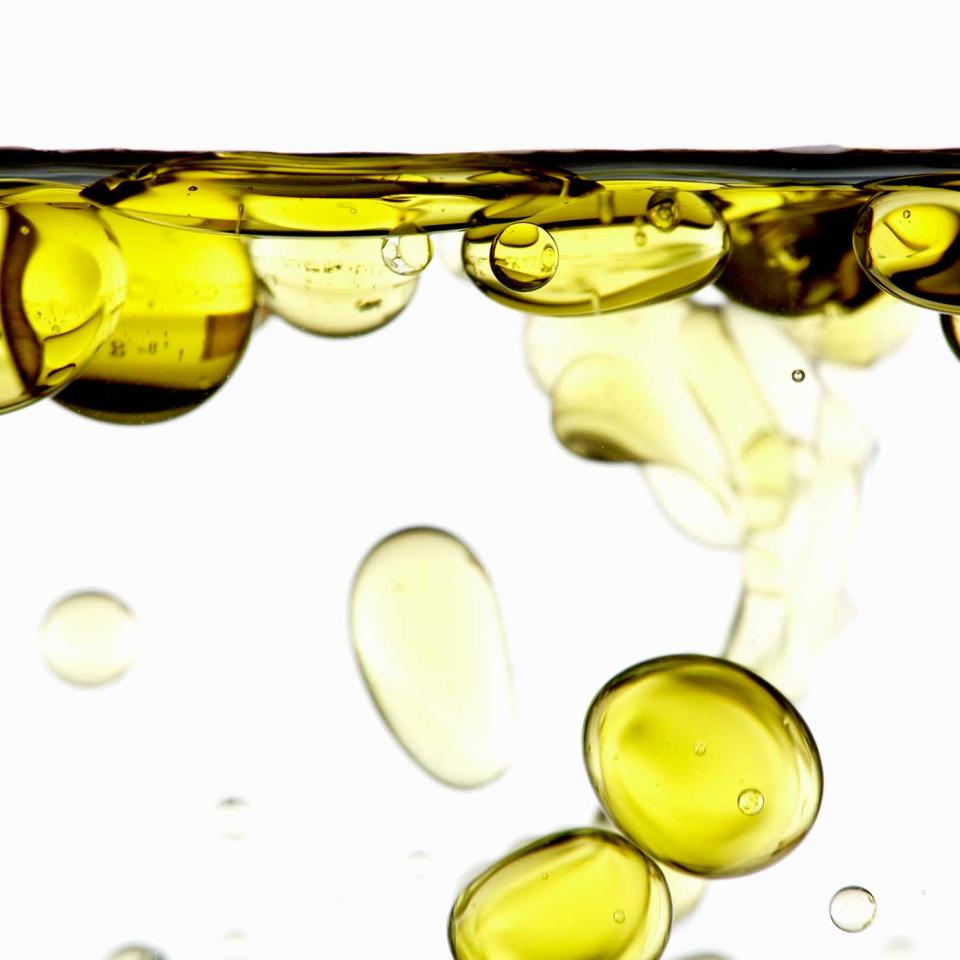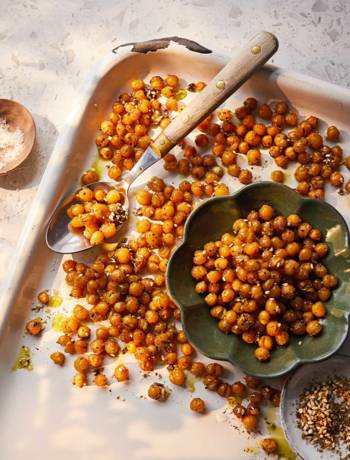Health
The healthy oil guide
by Emma Hughes

What should you use for maximum taste – and health benefits – when you drizzle, roast, dress and fry? Emma Hughes finds out...
Until recently, it was the big dietary baddie. We all thought eating foods high in fat would put us in line for a heart attack and make us – well, fat. Low-fat spreads and cooking sprays were everywhere. But as it turns out, we’d got it all wrong. ‘Fats are absolutely essential as part of a balanced diet,’ says nutritionist Liam Holmes of pH Nutrition, who’s worked with the Republic of Ireland national football team, Fulham FC and Third Space gyms. ‘They do everything from helping with hormone balancing to supporting the central nervous system. They also make sure that fat-soluble vitamins [including vitamins A, D, E and K] are absorbed, so pairing them with nutrient- dense foods can assist with getting all the goodness.’
Which oil is best?
Oils are one of the most easily accessible sources of fat around. But although we now know they aren’t inherently bad, most of us still have questions about them. Do they become dangerous if you heat them? Is coconut oil actually a superfood? And is it really possible to get oil from avocados? Let’s start with the ever-popular olive oils. What’s the difference between the various types? Produced everywhere from Italy and Greece to Croatia, this modern-day essential is labelled based on how it’s extracted from the olives and its acidity levels. Extra-virgin, extracted without using heat or chemicals, has the lowest acidity (which means it tastes the best), and is the most expensive – look out for those produced on a single estate, like wines. Virgin olive oil is extracted in the same way as extra-virgin, but has slightly higher acidity, while plain olive oil, the cheapest kind, will have been refined and blended, which means it’s nothing special on the taste front. They all have their place in the kitchen.
‘The Mediterranean diet is one of the healthiest in the world, and I use that as a benchmark for how most people should be eating,’ says Dr Rupy Aujla, an NHS doctor turned healthy- eating YouTube star and author of The Doctor’s Kitchen (Harper Thorsons, £14.99). He’s a fan of sautéeing, dressing salads and making pestos with extra-virgin olive oil that’s been cold-pressed. ‘The way an oil is produced does have a bearing on its nature,’ he explains. ‘When you use heat extraction or other harsh processes, that can damage the quality of the fats. So I always look at the quality of the sourcing of the oil, rather than the type of oil itself necessarily.’ Although oils all contain the same number of calories per gram (nine, compared to four for proteins and carbohydrates), chemically no two are exactly the same.
They have two main components: saturated and unsaturated fatty acids, with the second type further divided into monounsaturated fats and polyunsaturated fats (confused yet?). Each oil has a unique balance of these: olive oil and rapeseed oil, for example, are rich in monounsaturated fats, while sunflower oil is rich in polyunsaturated fats. These chemical structures do different things to your blood: while unsaturated fats can help to lower the levels of LDL (the ‘bad’ kind of cholesterol that’s linked to heart disease), it’s believed the saturated kind can actually raise them. When you look at oils from this perspective, so-called ‘healthy’ options can start to look anything but. Take trendy coconut oil, for instance, which has been hailed a superfood that can do everything from boosting your immune system to healing wounds. Of all the oils available, it actually has by far the highest proportion of saturated fat – although a small and somewhat controversial UK-based study earlier this year found that volunteers who ate three tablespoons of coconut oil every day for a month saw levels of the ‘good’ blood cholesterol that may protect against heart disease, HDL, rise by 15%.

Should you believe the hype?
The consensus right now is that we shouldn’t get too excited about it. ‘When it comes to food, there’s no magic elixir,’ says Holmes. ‘For athletes, coconut oil is a great energy source, and using it to support training in this way can be really beneficial. But it’s a bit overhyped.’ Aujla admits coconut oil may have some antimicrobial properties, thanks to specific fatty acids it contains. ‘But does that mean we should be smearing it all over our teeth or ingesting it in large quantities? No. There’s no evidence to suggest living off a diet of largely coconut oil is going to give you any health benefits.’
So – we should be swapping oils high in saturated fats for those containing unsaturated fats, right? Not quite. When you start heating them, things get even trickier. Every oil has an approximate ‘smoke point’, beyond which the fats in it start to break down (a process called oxidation, which can also happen when oils are stored in direct sunlight) and form new compounds, including aldehydes – the consumption of which has been linked to conditions including cancer and heart disease. The higher an oil’s smoke point, the fewer aldehydes you’re likely to end up consuming. In a 2015 study by De Montfort University in Leicester into which oils are safest to fry with, oils rich in polyunsaturates, such as sunflower oil, which we tend to think of as ‘light’ choices, actually produced 20 times the amount of aldehydes recommended by the World Health Organisation, whereas oils rich in saturated fatty acids or monounsaturated fatty acids, like olive oil, produced far less.
Don't overheat
It’s important to note that the science around all this is still developing. For now, experts say, it’s safest to just try to limit the amount of oil you heat aggressively. ‘Cooking at anything over 180°C is going to be damaging to most foods – we shouldn’t really be taking them to that temperature in the first place,’ says Rupy Aujla, who recommends low- to medium-heat cooking, such as poaching and baking, as well as damage-limitation steps if you have to deep-fry. ‘Blotting fried food with kitchen paper is one way of making sure you’re consuming less of the oil you’ve heated to a high temperature, and you certainly shouldn’t ever re-use frying oil – if you do that you damage the oil, then let it cool, and then damage it again.’
There’s one last consideration – and that’s flavour, of course. Coconut oil has quite a strong taste, so it’s best saved for recipes you think are going to be complemented by it, for example hot chocolate sauces to pour over ice cream. Golden rapeseed oil makes luxurious mayonnaise, sesame oil is the go-to for stir-fries, and nothing beats a grassy extra-virgin olive oil for dunking warm bread into. And avocado oil? With its buttery flavour it makes a delicious salad dressing – but it also has a very high smoke point, making it a sensible choice for deep-frying. ‘The key is to have a variety of oils in your kitchen to use in different ways,’ says Liam Holmes. ‘And if you’re using relatively small amounts, you can focus on quality – buy the very best oils your budget allows. That’s the key.’
Now read our guide to cooking with all the different oils.












